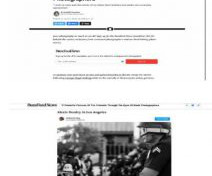Software Downloads Netflix & Disney+ Videos to Make DRM-Free Copies
TorrentFreak
MAY 17, 2022
Long before the advent of legitimate online video streaming services, torrent sites and similar platforms allowed users to download and keep copies of movies and TV shows. Aside from living up to the significant functional claims in its marketing, the big questions revolve around legality. Subscriber Agreements.
































Let's personalize your content